Welcome to our comprehensive guide to the best AV receivers! If you’ve ever felt overwhelmed by the multitude of specs and model numbers, wondering which AV receiver will truly make your speakers sing, you’re in the right place.
An AV receiver is the backbone of any home theatre system, serving as the hub that connects and controls your audio and video components. From delivering cutting-edge surround sound to ensuring compatibility with your devices, a good AV receiver can transform your entertainment experience.
In this article, we’ll discuss key features you should look for in an AV receiver, such as audio processing capabilities, the number and types of inputs and outputs, and the latest advancements in surround sound technology.
We’ll also cover essential aspects like future-proof connectivity options, and ensuring your receiver stays compatible with new devices and formats as they emerge. This includes support for 4K and 8K resolution displays, pillars of modern home entertainment.
Choosing the right AV receiver can dramatically improve the audio quality of your movies, music, and games, making every sound more immersive and realistic. A high-quality receiver can also simplify your setup by consolidating multiple inputs into a single, easy-to-manage system.
Modern AVRs come with smart features like voice control, app integration, and wireless streaming, adding wireless convenience to your entertainment hub – so these are also good things to consider if you want a more premium system.
We’ll dive deeper into these features and benefits later in the article, but for now, sit back, relax, and get ready to explore the top AV receivers that can elevate your home theatre experience.
Whether you’re a seasoned audiophile or a newcomer to the world of high-quality audio, our guide is here to help you make an informed decision and find the perfect AV receiver for your needs.
In a hurry?
Here are three top picks from our list to get the ball rolling:
| Denon AVR-X2800H AV Receiver |
| Check the current price |
| Yamaha RX-A6A AV Receiver |
| Check the current price |
| Arcam AVR31 AV Receiver |
| Check the current price |
Why we’ve chosen these AV receivers
There are plenty of great AV receivers on the market today, so how did we choose the ones on our list? We wanted to offer something for everyone. To cater to different budgets, we’ve included receivers from various price ranges, ensuring there are options to suit both value seekers and those looking for high-end performance.
User convenience was another major consideration. Factors like ease of setup, room correction, and connectivity options play a huge role in our picks. We looked for receivers with ample HDMI inputs, support for the latest video standards, and wireless connectivity options like Bluetooth and Wi-Fi. Ease of use was also important, so we favoured models with intuitive interfaces and user-friendly controls.
Sound quality is crucial for an immersive home cinema experience. We understand that AV receivers require a lot of setup for optimal performance, making it hard to experience their true potential without high-end speakers and large configurations in showrooms. We’ve highlighted the sound quality of the receivers we’ve chosen to help you make an informed decision.
Our selections provide a balance between performance, features, and value, ensuring you get the best audio experience for your home cinema setup.
The best AV receivers
1. Denon AVR-X2800H AV Receiver – the best budget AV receiver
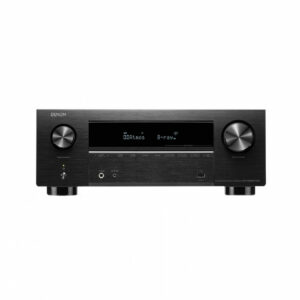 Key features
Key features
- 7.2-channel audio
- 8K/60Hz and 4K/120Hz and two outputs with eARC compatibility
- Dolby Atmos, DTS:X, and Auro-3D support and Audyssey MultEQ XT room calibration
Pros
- Handles 8K pass-through and upscaling, along with HDR10+ and Dolby Vision
- Enhanced 1080p setup menu and web user interface for user-friendly configuration
- Includes VRR, ALLM, and QFT for improved gaming experience
Cons
- Only three out of six HDMI inputs support 8K
The Denon AVR-X2800H is a great touchstone for anyone just starting their home cinema or upgrading on a budget. It provides exceptional value for money and serves as an outstanding all-around home audio hub, supporting 7.2-channel speaker systems with a power rating of 95 watts (two channels driven).
As is a must for any modern surround sound AV receiver, the X2800H supports Dolby Atmos and DTS:X decoding, so you can enjoy realistic 3D audio.
Even though it’s a couple of years old at the time of writing, the AVR-X2800H still covers the latest video tech, supporting 8K at 60Hz and 4K at 120Hz passthrough. This means it’s a great option for future-proofing your setup.
You can look forward to smooth, high-quality visuals, perfect for streaming HDR10+ content or enjoying fast-paced gaming with features like Quick Frame Transport, Variable Refresh Rates, and Auto Low Latency Mode.
If you need full 8K support across all six HDMI inputs, 9.4-channel audio, and IMAX Enhanced support, you might consider Denon’s next step up, the AVC-X3800H. However, if you already know what you’re connecting and don’t need to upgrade every HDMI port to 8K, the X2800H is a cost-effective alternative.
The built-in HEOS technology also allows for wireless music streaming from popular services like Spotify and TIDAL, providing multiroom audio capabilities controlled via the HEOS app.
We’d recommend this receiver as a starting point for a home cinema because of its user-friendly setup. It features a 1080p menu display and a web user interface accessible through the Denon AVR Remote app, making system configuration and management less intimidating for beginners.
Additionally, it comes with Audyssey MultEQ XT Room Calibration, which automatically adjusts sound settings to match your room’s acoustics for optimal performance.
If you want to learn more about this receiver, check out our full review of the Denon X2800H here.
2. Yamaha Aventage RX-A6A AV Receiver – the best mid-range AV receiver
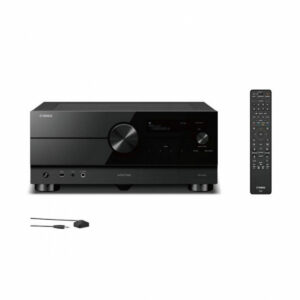 Key features
Key features
- 9.2-channel audio with 11-channel pre-out connections
- 8K/60Hz and 4K/120Hz HDMI with eARC (seven inputs, three outputs)
- MusicCast, AirPlay 2, Bluetooth, and built-in streaming services
Pros
- YPAO room calibration with RSC and 3D multi-point measurement
- Advanced gaming features with ALLM, VRR, QFT, and QMS
- Unwanted vibrations are lessened through the use of anti-resonance technology
Cons
- For some users, the in-depth setup with numerous DSP options may feel overly complicated
The Yamaha RX-A6A AV Receiver is an excellent choice for those seeking incredibly detailed surround sound and has proven itself as a versatile mid-range product. It offers a 9.2-channel support with 150W per channel for larger speakers and supports audio formats including Surround AI, CINEMA DPS HD3, DTS:X, Auro-3D, and Dolby Atmos with Height Virtualiser; quite the package of 3D audio formats.
This is all supported by admirable acoustic engineering and precision, with YPAO (Yamaha Parametric room Acoustic Optimiser) included to fine-tune the audio output to your room’s acoustics. This system includes reflected sound control and multi-point measurement, ensuring a natural and balanced sound regardless of the room’s layout.
For video, the RX-A6A supports HDMI 2.1, providing compatibility with 8K/60Hz and 4K/120Hz, which, again, is a must-have for next-gen gaming and ultra-high-definition screen support. This is supported across all seven HDMI inputs, ensuring the receiver remains relevant in the ever-changing world of home audio for a long time without needing to upgrade.
The RX-A6A also excels in connectivity and streaming capabilities. It supports a wide range of streaming services, including Spotify, TIDAL, and Amazon Music. Yamaha’s MusicCast system allows for multiroom audio so you can enjoy synchronised music with compatible products throughout your home.
Additionally, it offers AirPlay 2 and Bluetooth connectivity, providing flexible options for wireless streaming from your smart devices.
3. Arcam AVR31 AV Receiver – the best high-end AV receiver
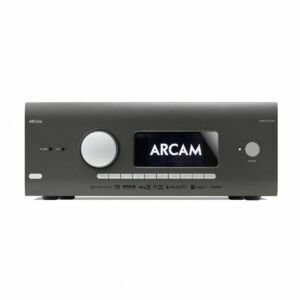 Key features
Key features
- 7.2-channel with Class G amplification, supporting 16 channels processing
- HDMI 2.1 with 8K/60Hz and 4K/120Hz, eARC support (7 inputs, 3 outputs)
- ESS 9026PRO audiophile DACs for high-quality conversion
Pros
- Handles Dolby Atmos, DTS:X, AURO-3D, and IMAX Enhanced
- MQA decoding, Roon Ready, and THX Certified for audiophile-grade listening
- Precision room calibration with Dirac Live for sound performance tailored to your space
Cons
- Expensive compared to other AV receivers, with added costs if using additional amps
The Arcam AVR31 is our final pick and an excellent choice for those seeking the ultimate high-end home cinema experience. Its versatility is a major perk, featuring seven channels of Class G amplification that provide 100W per channel. This makes it capable of powering demanding cinema speakers while maintaining high-quality sound, with a design focused on maximising efficiency and minimising distortion.
While the AVR31 has seven amplified channels, which might seem limiting to some, it makes up for this with the ability to decode up to 16 channels. This focus on fewer but higher-quality channels ensures superior sound performance when paired with an external power amplifier. This means you can build surround sound systems as large as 9.1.6 channels for an enormous home cinema effect.
The AVR31 covers all major 3D audio technologies, supporting Dolby Atmos, DTS:X, IMAX Enhanced, Auro-3D, Dolby Virtual Height, and DTS Virtual for setups without height speakers.
Naturally, at this end of the market, it includes HDMI 2.1 connectivity, ensuring compatibility with the latest video formats as well, such as 8K/60Hz and 4K/120Hz. With seven HDMI inputs and three outputs, including one with eARC, the AVR31 offers flexibility in connecting a wide range of devices. It also supports HDR10, HDR10+, Dolby Vision, and HLG, delivering vibrant and detailed visuals.
Despite its high specifications, you don’t need to be an expert to install this home entertainment hub. Setting up the AVR31 is straightforward, thanks to its user-friendly interface and included calibration microphone. With support for Dirac Live room correction, the receiver automatically optimises sound to match your room’s unique acoustic characteristics.
The AVR31 is also designed for modern streaming needs. It includes built-in support for Apple AirPlay 2, Google Chromecast, Bluetooth aptX HD, Spotify Connect, and Tidal Connect. It is also Roon Ready and supports MQA file decoding, catering to audiophiles who demand high-resolution audio.
4. JBL MA510 AV Receiver – the best AV receiver for gaming
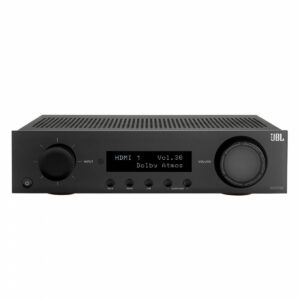 Key features
Key features
- 5.2-channel audio
- 8K/60Hz HDMI and eARC support
- Roon Ready, Spotify and Tidal Connect, Bluetooth, AirPlay 2, and Chromecast
Pros
- Gaming features including VRR, ALLM, and QFT to reduce lag and screen tearing
- Dolby Atmos, DTS:X, and 192kHz/24-bit audio support
- Features HDMI 2.1 with HDR 10+ and Dolby Vision visuals
Cons
- Comes with EZ Set EQ, but Dirac Live isn’t supported until higher in the range
At the time of writing, this is a fairly recent addition to the marketplace. If you’re on the lookout for a cutting-edge home theatre that’s both budget-friendly and equipped for wireless home audio, supporting the latest technology such as 8K HDMI, and loaded with gaming features, this could be just what you’re looking for.
The JBL MA510 AV Receiver is a fantastic all-rounder for anyone wanting to boost their home cinema sound, and it’s a particularly good pick for gamers. With support for 8K/60Hz and 4K/120Hz, this receiver offers ultra-high-definition visuals through its four HDMI 2.1 inputs, ensuring compatibility with the latest gaming consoles.
The MA510 represents a significant step up from the MA310, being the first in the series to support Variable Refresh Rate (VRR), Auto Low Latency Mode (ALLM), and Quick Frame Transport (QFT). These technologies help reduce input lag, minimise screen tearing, and deliver smooth, responsive gameplay, fulfilling the performance potential of both your display and console.
The MA510 supports 5.2-channel speaker systems which, with onboard Dolby Atmos and DTS:X decoding, offers an immersive listening experience. With 75W RMS at 8Ω or 100W RMS at 4Ω, it easily fills mid-sized home cinema rooms, making it perfect for everyday use or dedicated movie nights, all while providing high-quality sound without breaking the bank.
As a hi-fi audio hub, the JBL MA510 delivers high-resolution audio (192kHz/24-bit) for clear and detailed sound. Connectivity is a breeze with Bluetooth, AirPlay 2, and Google Chromecast. Plus, it includes Roon Ready support and compatibility with Spotify and Tidal Connect, covering all your music streaming bases.
Designed for ease of use, the MA510 features the EZ Set EQ app, which simplifies the setup process by adjusting the sound to match your room’s acoustics. While it may not have the advanced Dirac Live capabilities of the higher-end MA7100HP and MA9100HP models, it still offers ample customisation and optimisation for most home theatre setups.
Why buy an AV receiver?
In many scenarios, buying a soundbar or compact all-in-one amplifier might seem like the obvious solution to home entertainment. They’re smaller, easier to install, and often cheaper. However, an AV receiver can transform your home cinema experience in ways these simpler options cannot.
An AV receiver serves as the hub of a home entertainment system. It delivers detailed and dynamic sound, creating an immersive audio environment that a soundbar or amplifier can’t match. This central role doesn’t just mean home cinema; it includes game consoles, smart boxes, turntables, CD players, streamers, and any other audio source you might have.
Many receivers also feature multi-zone functionality, allowing you to establish a multiroom sound system or play stereo audio in a separate space simultaneously, great for parties, outdoor speaker setups, or even commercial environments.
Plus, AV receivers offer more connectivity options. They can handle larger speaker and subwoofer configurations and multiple HDMI sources, support the latest audio and video formats, and often include wireless capabilities like Bluetooth and Wi-Fi.
Basically, an AV receiver gives you superior sound quality and a more integrated, versatile home cinema setup. It might be a bit more complex to install, but the payoff in audio performance and system flexibility is well worth the effort.
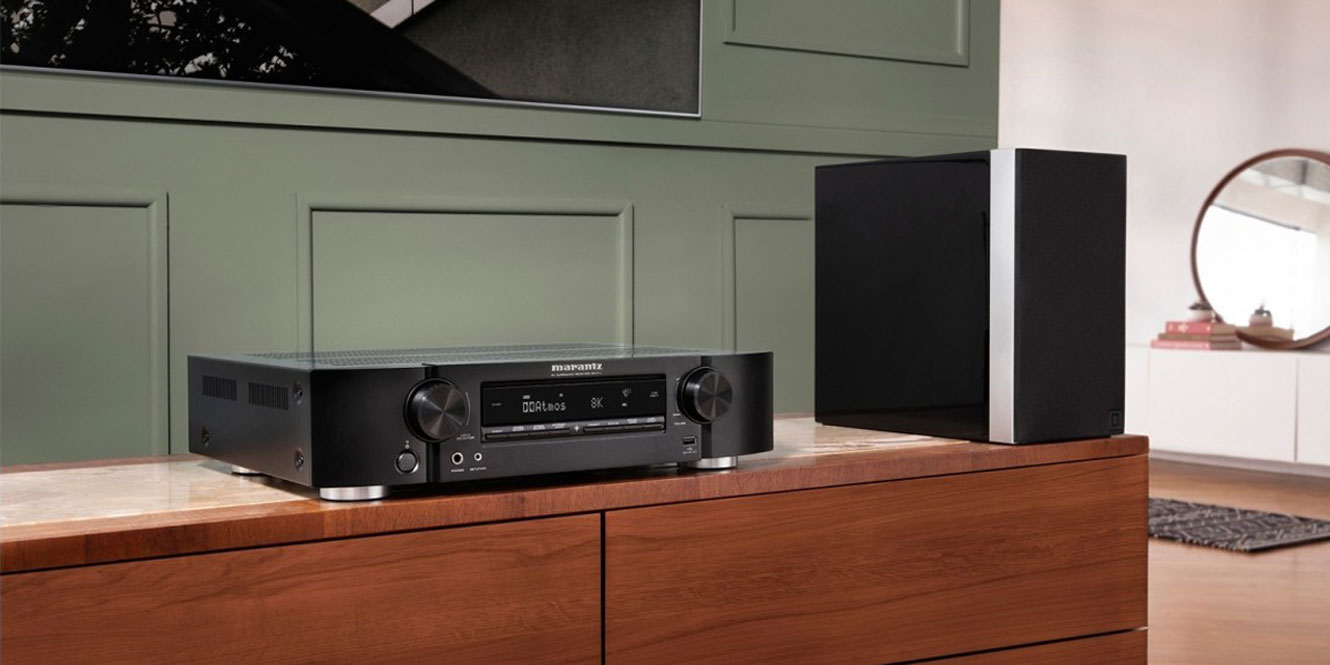
How to choose the best AV receiver for you
Number of channels
The number of channels in an AV receiver determines how many speakers it can support, influencing the depth, balance, and spread of your surround sound experience. A standard 5.1-channel setup, indicating five speakers and one subwoofer, includes two front speakers – usually the largest to handle most of the audio output – a centre speaker for vocals, and two surround speakers for ambient or directional sound.
The “.1” refers to the subwoofer, responsible for boosting bass and underlining soundtracks or more intense sound effects. Modern receivers might increase this to “.2” or “.4”, which simply indicates multiple subwoofer compatibility. Adding extra can help eliminate low-end dead spots, ensuring even bass distribution throughout your room.
Similarly, by increasing the speaker count from 5.1 to 7.1, 9.1, or higher, you’ll be able to add extra dimensionality for spatial audio effects, especially if you’re interested in 3D audio technology like Dolby Atmos, DTS:X, or IMAX Enhanced.
Filling available channels improves sound distribution but can make the initial setup more hands-on, especially if you’re installing in-ceiling speakers. Nevertheless, a well-configured system delivers an unforgettable home cinema experience.
Power output, wattage, and impedance
So, let’s assume you have a rough idea of the number of speakers you want. What now? Watt now, indeed: Wattage is the measure of power output an AV receiver can provide to your speakers and plays a crucial role in determining the loudness and clarity of your home cinema.
Manufacturers should provide a continuous (or RMS) rated power output. This has become the standard for AVR power ratings. Generally, you’ll see a specification that reads: “Continuous rated power output @8Ω, 20Hz-20kHz, [THD percentage], 2 channels driven”
That’s a lot all at once, so let’s break it down:
@8Ω
“@8Ω” (or 8 ohms) indicates what impedance the receiver was tested. This doesn’t necessarily mean that the receiver is only compatible with 8Ω speakers, and lower impedance may provide you with higher power capabilities. Most home audio speakers are rated between 4Ω and 8Ω.
If possible, identify the AVR’s minimum supported impedance for a more efficient power transfer, reduced risk of overheating or damage, and a greater selection of compatible speakers.
20Hz-20kHz
“20Hz-20kHz” indicates that the manufacturer tested the AVR with a tone climbing the full range of human hearing. In contrast, specifications that read “1kHz” indicate that only a single tone was used for testing. While not technically wrong, this single-tone test is less representative of the amplifier’s power capabilities as it doesn’t reflect how the receiver handles the entire spectrum of audio frequencies and real-world performance.
THD
The THD (total harmonic distortion) percentage will vary from receiver to receiver. For the most accurate audio experience, a lower THD percentage is desirable. Generally, a THD below 1% is considered good, with high-end receivers often achieving THD well below 0.1%.
2 channels driven
Finally, “2 channels driven” indicates wattage measured with two speakers powered during testing. When more channels are used, the power per channel decreases due to the shared load on the receiver’s power supply.
If only a “1 channel driven” spec is provided, it will show a higher wattage than in a typical multi-channel setup. Since a single-speaker setup would be very rare, look for specs with two or more channels driven for a realistic assessment. Your front speakers will usually require more power, while surround speakers need less for their supportive role.
Remember that room size, speaker quality, and listening habits also play crucial roles in determining the necessary wattage. Speaker manufacturers will generally provide you with recommended amp requirements, so this is a good place to start when looking for your new receiver.
HDMI technology
HDMI is now well-established as the standard connection for home cinema. It simplifies setup by carrying both audio and video signals in a single cable, reducing clutter and ensuring high-quality transmission.
When choosing a receiver, ensure it has enough HDMI inputs to accommodate all your devices, such as Blu-ray players, gaming consoles, and streaming boxes. HDMI 2.0 or higher is recommended to support 4K and HDR content. While having more HDMI inputs might seem like the best way to future-proof your setup, consider how many devices you realistically plan to connect. Assessing your current and anticipated needs will help you avoid paying for unnecessary features.
You’ll also likely come across receivers with HDMI ARC (Audio Return Channel) or eARC (Enhanced Audio Return Channel) outputs. eARC provides higher bandwidth and faster speeds, allowing for uncompressed audio formats like Dolby TrueHD and DTS-HD Master Audio. It also supports larger surround sound speaker systems, returning more immersive audio to your receiver from your TV.
Installation and room calibration software
Installation and room calibration software can greatly simplify setting up your AV receiver and ensuring optimal sound quality. Many modern receivers come with automatic calibration systems like Audyssey, YPAO, or Dirac Live, which use a microphone to measure the acoustics of your room and adjust the speaker settings accordingly.
This process compensates for room size, speaker placement, and any acoustic anomalies, delivering a balanced and immersive audio experience. Additionally, many receivers offer a guided initial setup procedure to help you connect and configure your system. These receivers make it easier to achieve professional-level sound quality at home without needing expert knowledge.
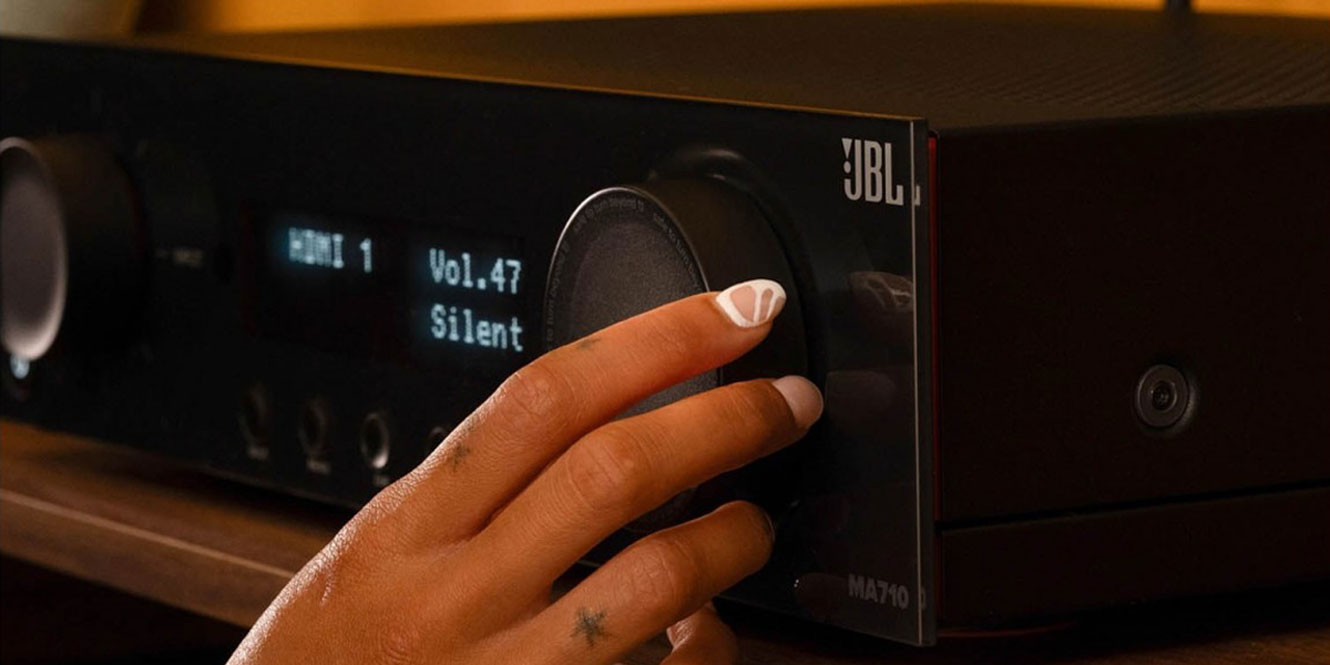
Complete the setup
We’ve written a variety of articles to help you optimise your home cinema system, discussing everything from gaming surround sound and ceiling speaker installation to projector and television buying guides. It’s a subject we’re always eager to revisit. So, let’s complete your AV setup.
Speakers
Firstly, you’re going to need speakers.
To simplify things, start by looking for speaker packages. This approach saves you time and money in the long run, and you can buy with confidence knowing that experts have paired the speakers and receiver for optimal performance. A 5.1 system sets a good foundation and you can always add more speakers later.
We have a fantastic selection of speaker bundles from top brands like Wharfedale, Monitor Audio, Dali, and KEF. We recommend the Wharfedale Diamond 12.1 HCP Speaker Package – the bookshelf and centre speakers in this bundle feature Wharfedale’s renowned Klarity drivers, while the subwoofer boasts a 10-inch self-dampening driver. You can also customise your home cinema system with our bundle builder, which cable packs for instant setup.
The Monitor Audio Radius 45 Satellite Speakers are another great option. If your living space is limited, these are for you. They provide an immersive home cinema experience with exceptionally clear and wide sound dispersion, courtesy of a rear-firing 20mm C-CAM tweeter and a three-inch MMP II driver, while remaining compact and suitable for smaller setups.
TV/projector
Next up, it’s essential to have the right display.
You can go for TV or projectors – whatever suits your room – but for a high-quality display, consider something like Samsung’s The Frame. This is the perfect lifestyle television, offering 4K resolution while doubling as an art display when not in use, blending into your room’s decor instead of being a blank space in the corner of your living room. For a wider variety, check out our favourite Samsung TVs at the moment.
Other brands are available of course, and you can’t go wrong with something from Panasonic or LG for high-resolution viewing.
If you prefer a projector, the Epson EH-TW9400 4K-PRO-UHD Projector is a mulit-award winning choice. It provides high-end quality, with incredible 4K support for a true home cinema experience.
Accessories
Don’t overlook the importance of quality home cinema accessories. The AudioQuest Cinnamon HDMI Cable ensures excellent signal transmission, and the Tacima CS947 Mains Conditioner is an inexpensive way to protect against power surges and noise.
Proper cable management with sleeves and ties keeps your setup tidy. You could also treat your room with acoustic panelling for the ultimate home cinema experience.
FAQs
What is the best AV receiver on the market?
Here’s a list of some of the best AV receivers on the market:
- Arcam AVR31 8K 7.1 Channel AV Receiver
- Denon AVC-A1H Flagship 8K 15.4 Channel AV Receiver
- Arcam AVR31 8K Immersive Surround Sound AV Receiver
- Denon AVC-X6800H 8K 11.4 Channel AV Receiver
- Yamaha RX-A8A Aventage 11.2 AV Receiver
Who makes the best AV receivers?
Denon and Yamaha are widely regarded as two of the best manufacturers of AV receivers. Across various budget levels, they provide high-quality products with innovative features and reliable performance. Other leading brands include Onkyo and Marantz, both known for their excellent performance.
Does a good AV receiver really make a difference?
A good AV receiver makes a significant difference in your home theatre experience. It enhances audio quality with 3D audio decoding and supports high-resolution video with HDR formats, especially if augmented by AI. Investing in a quality receiver also ensures future-proofing for new technologies.
Final thoughts
Choosing the best AV receiver for your home cinema setup can seem like a daunting task, but it’s worth the effort. An excellent AV receiver not only enhances your audio and visual experience but also serves as the central hub for all your entertainment needs.
We’ve highlighted the best AV receivers for premium home cinema, ensuring there’s an option for everyone, whether you’re a budget-conscious buyer or a high-end audiophile.
Maybe this article has helped you realise that a surround sound system would be too big for your space. Why not check out our best soundbar and subwoofers to downsize your home cinema? We’ve also written more on ARC vs. eARC if you’re still unsure about the technology.
Want to tell us about your setup? Leave a comment below! We’d love to hear from you.

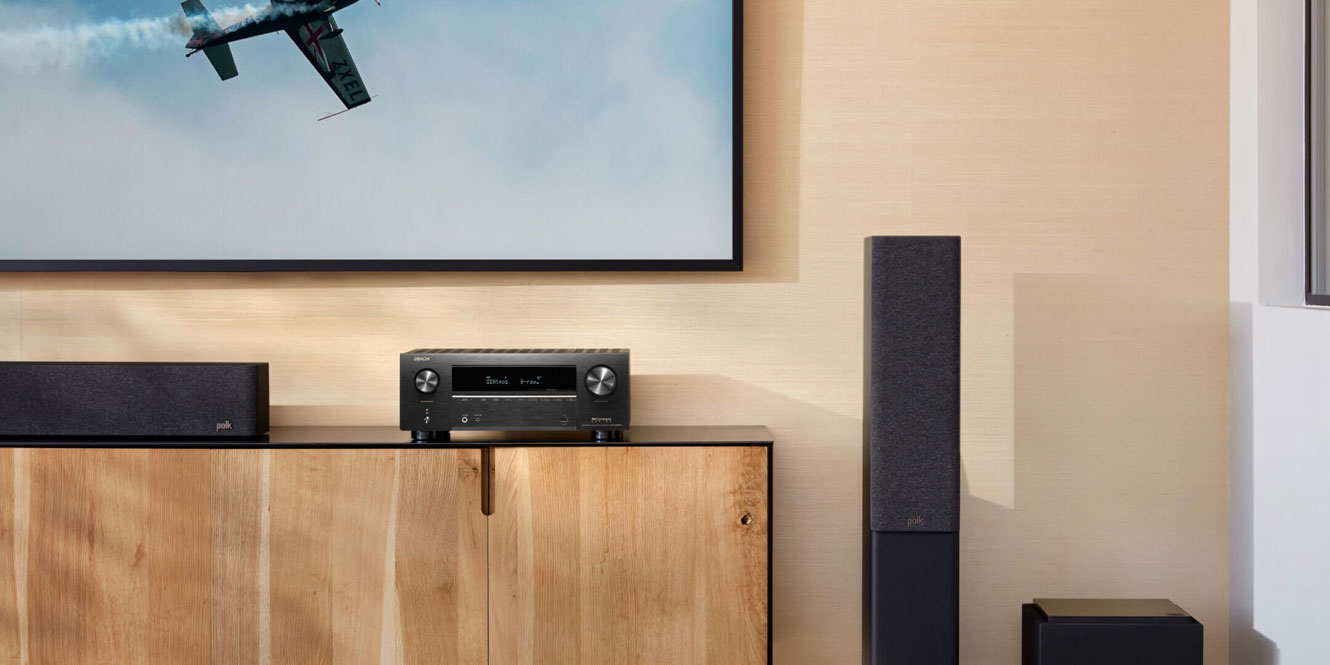

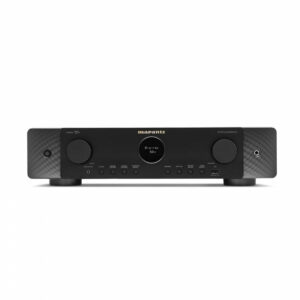 Key features
Key features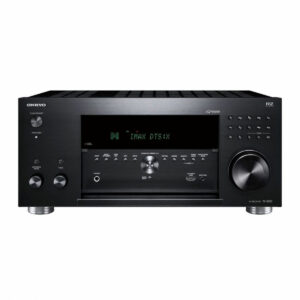 Key features
Key features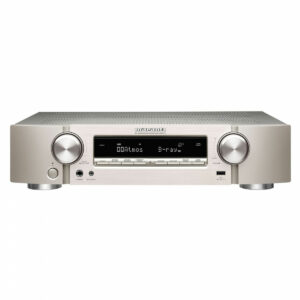 Key features
Key features
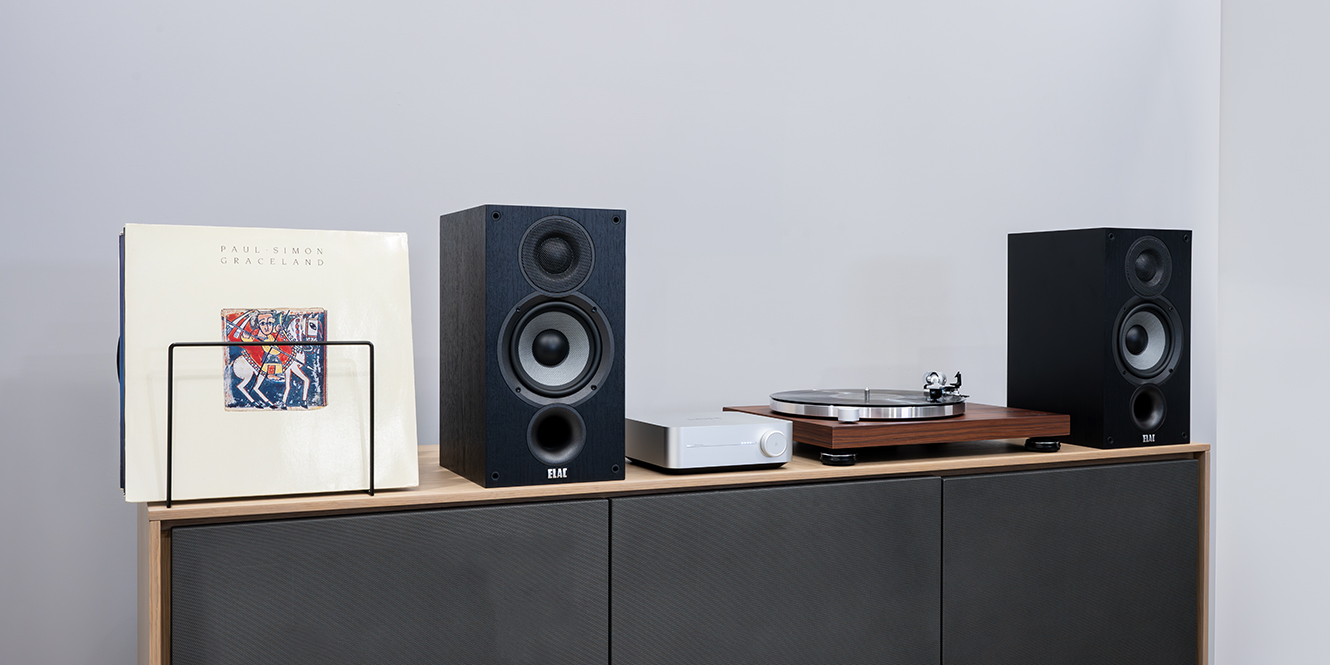
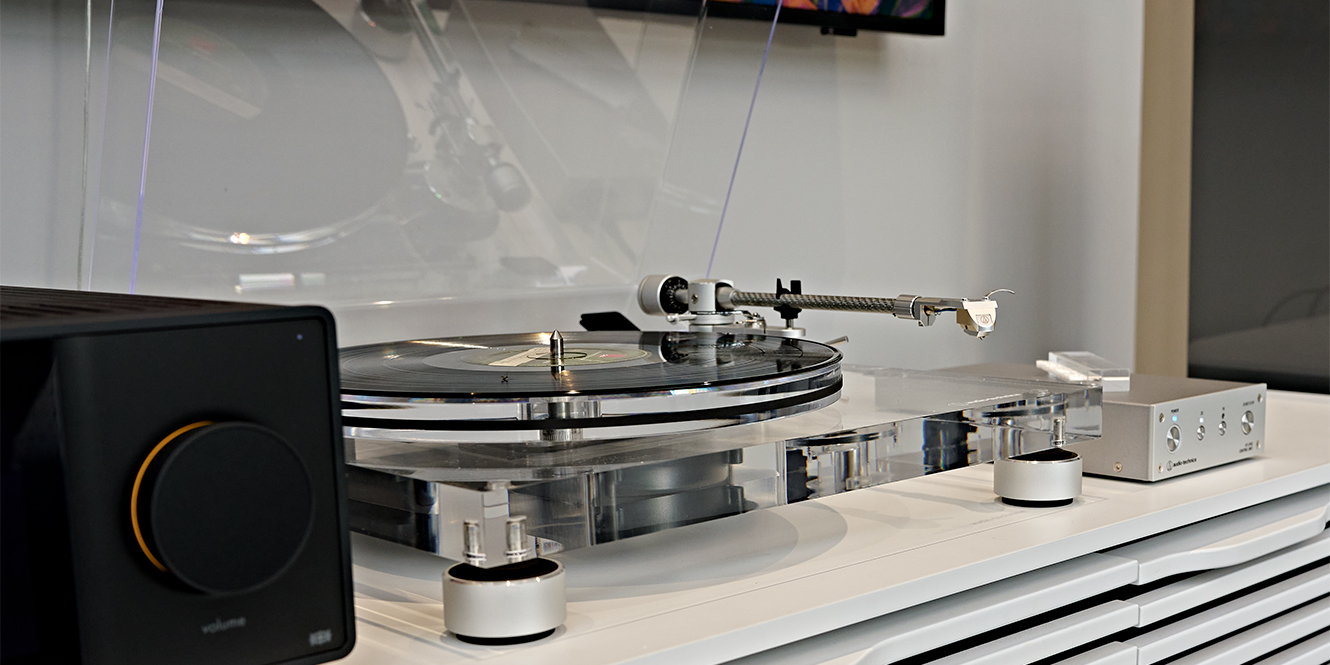
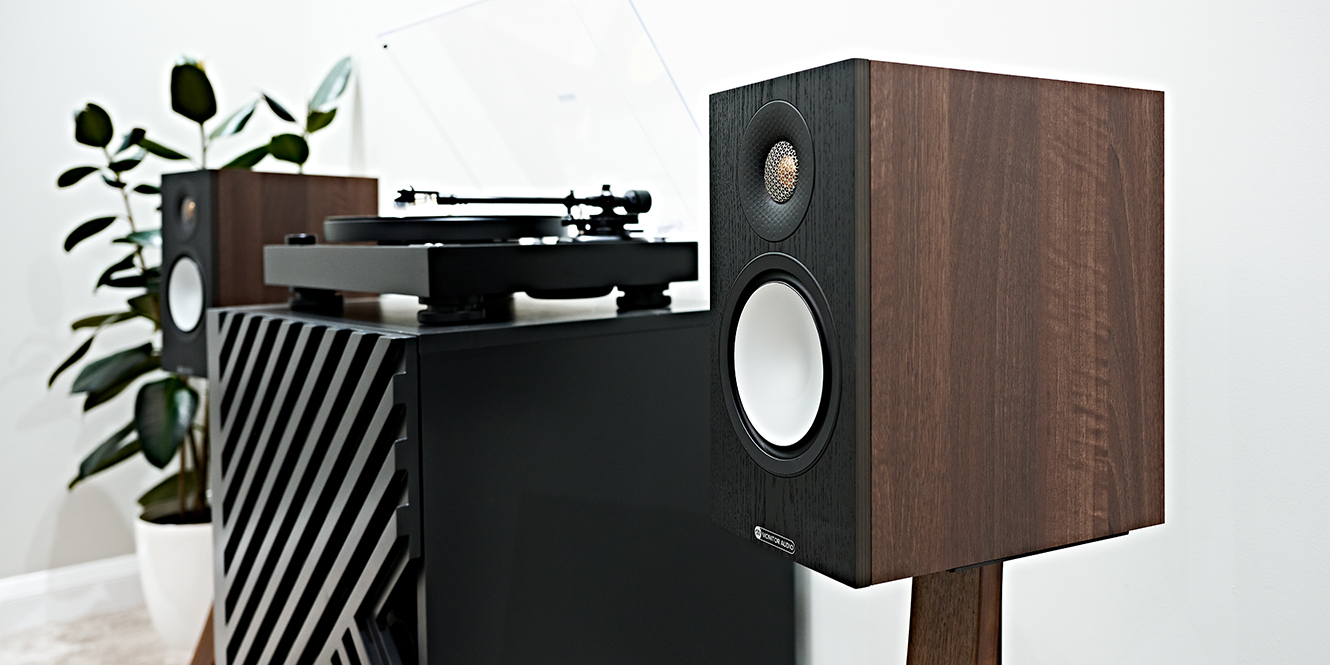




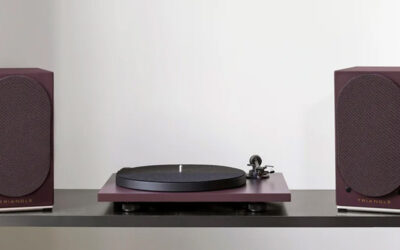
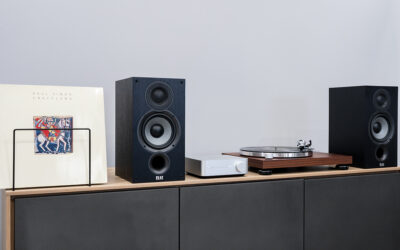
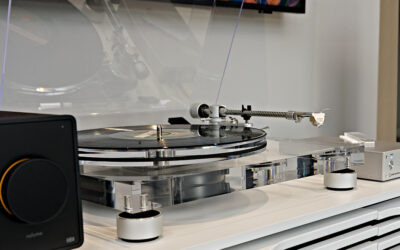
0 Comments